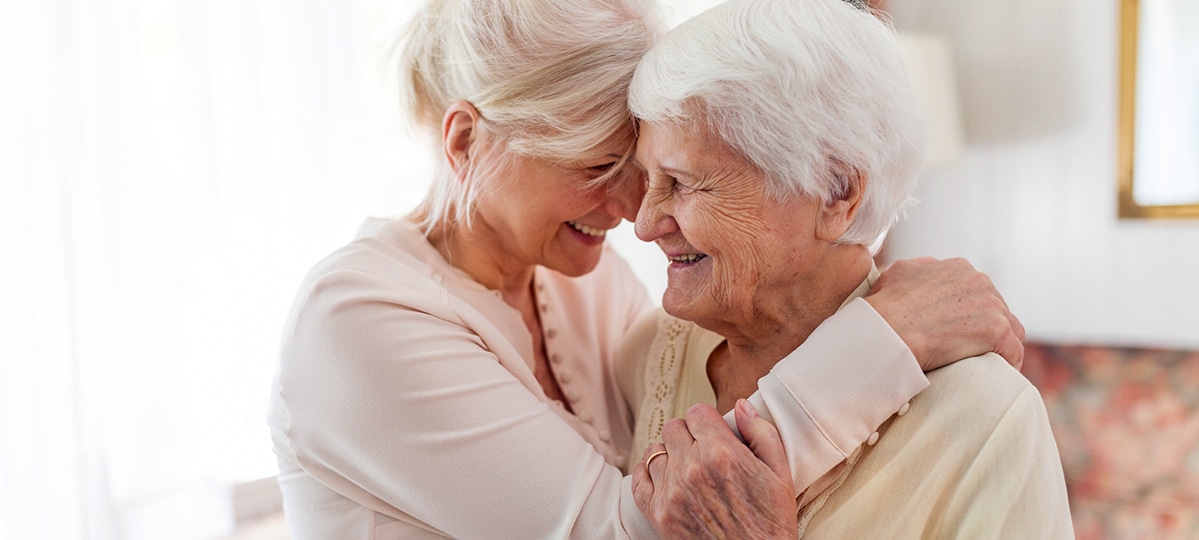Long-distance caregiving, defined as living an hour or more from the person in your care, has its own unique challenges. Thanks to advancements in technologies like telehealth and telemedicine, video conferencing, wireless security systems, and a whole host of other interactive wireless solutions, monitoring a loved one’s health and well-being from a distance has become a lot more doable.
We know that as a person age, they require more and more personalized care and assistance. If you live a distance away, the task of caring for an aging loved one becomes more stressful as it gets increasingly challenging. Moving closer isn’t always an option, and neither is uprooting them from their home. In fact, more and more aging seniors choose to prolong independence and age in place, finding comfort in their own familiar surroundings.
If you are a long-distance caregiver, there are things you can do to ensure their safety and remain involved in their care. Following are some quick tips and affordable ideas to help you tackle some of the hurdles of long-distance caregiving:
Utilize rideshare apps and volunteer transportation providers to get Mom or Dad safely where they need to go.
As people age, anxiety about driving places can set in, making it difficult to get to the food store, pharmacy, church, or medical appointments. Now there is a company called Go Go Grandparent that simplifies access to a car service by offering the ability to request a ride with just a phone call — no apps necessary.
Alternatively, you can schedule rides from your own phone app for them. UberAssist offers ride scheduling for people who need special accommodations; Lyft also offers the ability to schedule pick-ups and drop-offs so your loved one gets safely where they need to go.
Another service worth knowing about is the National Volunteer Transportation Center. While not a transportation provider itself, it exists to connect volunteer driver programs nationwide to the people who need them. Volunteer drivers groups are generally known to provide service above and beyond traditional rideshare programs, not only in that they’re free, but because volunteer drivers will often wait throughout a visit to the doctor or hospital for medical treatments, the grocery store, and other places so seniors who need the ride can count on a safe, reliable, return trip home again. Visit the National Volunteer Transportation Center’s website and click on “Map of Volunteer Driver Programs” to find one in the vicinity of your loved one to get started.
Install a DIY wireless home security system.
Home security systems have really changed in recent years. There are so many wireless options these days for self-installed home security systems, providing an affordable option to check in on Mom or Dad at home throughout the day. Installing one in a parent’s home can help you check in on them via indoor and outdoor cameras and drawer and window sensors that can alert you if a window or door is left open or unlocked. Mount a camera in the kitchen as well, pointed close enough to check to see that the stove and oven were properly turned off. Installing door sensors on interior spaces is also beneficial, like medicine cabinets, refrigerators, and kitchen cabinets, to let you know that Mom or Dad is safely moving about within their home. If the refrigerator hasn’t been opened for a while, you’ll know to check in on them to be sure they’re remembering to eat and drink several times a day. Motion sensors can send push notifications to let you know how often Mom and Dad are moving about the home, and smart fire detectors will notify the fire department if it detects smoke in the middle of the night when your parents are asleep.
Ask your parent to assign you as their healthcare proxy.
In general, it’s important to be knowledgeable about your loved one’s state of health. The more you know about any ailments or chronic issues, the better you can advocate for them from a distance. If you aren’t able to be there in person for healthcare visits, some doctors may let you participate in medical appointments by way of a videoconference during your loved one’s routine medical appointments. Check to see what their doctor’s protocol is with regard to remote participation for in-person appointments. If participating by way of video isn’t possible, healthcare proxies can still access their loved one’s online health portal to get information on changes in medication and other new developments. Since a healthcare proxy can also make medical decisions on behalf of their parent, you can also follow up with the doctor to discuss treatment options and make arrangements for second opinions for more serious issues.
Ensure they wear their 24/7 Medical Alert system around the clock.
As a long-distance caregiver, it’s important to have an emergency plan in case a fall should happen or some other mishap, like banging your head accidentally or tripping and falling in the shower. An ideal emergency plan includes having a reliable, nearby neighbor on board for emergency check-ins — and having a Medical Alert system, which gives round-the-clock immediate access to emergency services. Once the button is pressed in an emergency, the caregiver app’s push notifications will let the list of caregivers and family know by way of a text message or phone call the instant there is something happening. The biggest hurdle for a long-distance caregiver is ensuring that your parent understands they must wear it 24/7 to keep themselves protected. Features like an interactive caregiver app also provide long-distance caregivers with the ability to track when their parents go out and notify you when they return home, so you can always have peace of mind knowing where they are throughout the day. Pro tip: add the fall detection feature to ensure the device works even if your parent can’t push the button due to unconsciousness.
Build a local support network you can lean on.
If your parent is still living at home independently, coordinate services to help with medical needs, household chores, or just to check in on your loved one from time to time. If your parents aren’t tech-savvy enough to FaceTime or Zoom, ask someone from your support list to visit Mom or Dad and call through FaceTime so you can have a face-to-face chat to know they are ok and check in on a more personal level.




